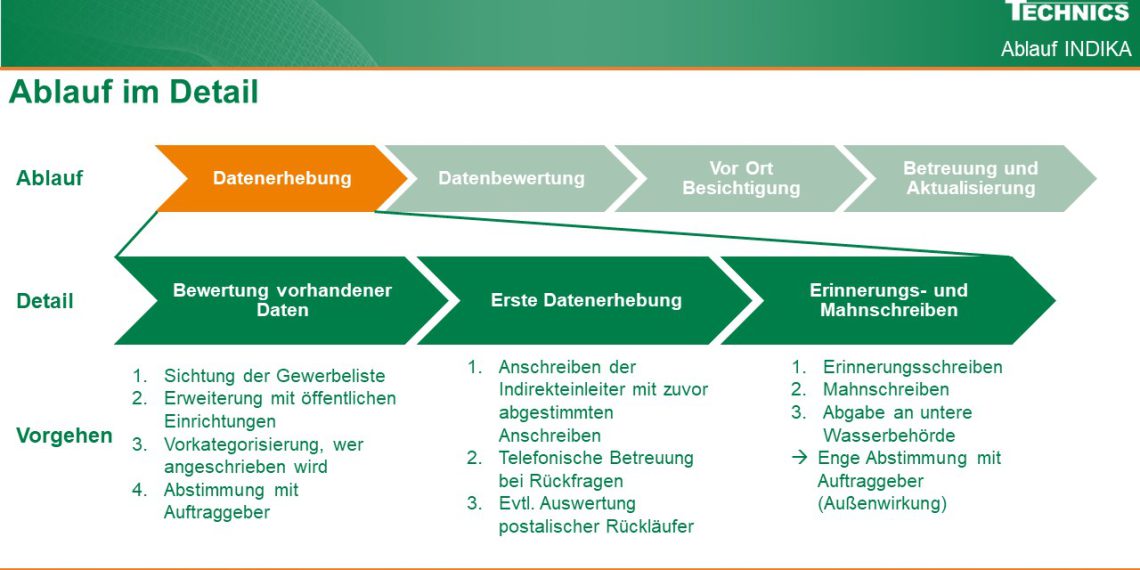In addition to fulfilling legal obligations to comply with defined protection targets, plant operators increasingly appreciate opportunities that arise from maintaining up-to-date and complete indirect discharger registers. Among other things, they can influence the increase of operational and occupational safety, the optimization of operations, disposal safety and quality, economic efficiency as well as fee stability and, in general, the service for customers. Increasingly, the question of sustainability is also becoming a focus of interest.
UNITECHNICS has developed a web-based indirect discharger register (INDIKA). With this, operators achieve above-average response rates, optimize information processes and can work solution-oriented and efficiently with a digital cadastre version. The fact is: what may have sounded like science fiction when the first e‑mail was sent in 1984 is now reality: our global world is fast and digitally networked.
Initial assessment
Since most of the indirect discharger registers kept in analog form were rather incomplete, it makes sense in many cases to start with an initial assessment. In this process, potential indirect dischargers are pre-categorized on the basis of a list of businesses and contacted by letter. With individual online access, the indirect dischargers then complete a questionnaire on the digital platform. Based on the answers given, they can then be divided into monitoring categories. According to the state of the art, plants that are highly worthy of monitoring should finally undergo a main assessment, which is also supported by the company.
Continuous monitoring
Since an indirect discharger register does not represent a snapshot, the indirect discharger register offers possibilities for permanent monitoring. In addition to the annual reconciliation of new and old business entries and the general re-query of data every two to five years, the operator can use an action and document management system to monitor his indirect dischargers in a partially automated and uncomplicated manner. In most cases, this communication takes place electronically, which can save both the indirect discharger and the operator a lot of time and effort.

















